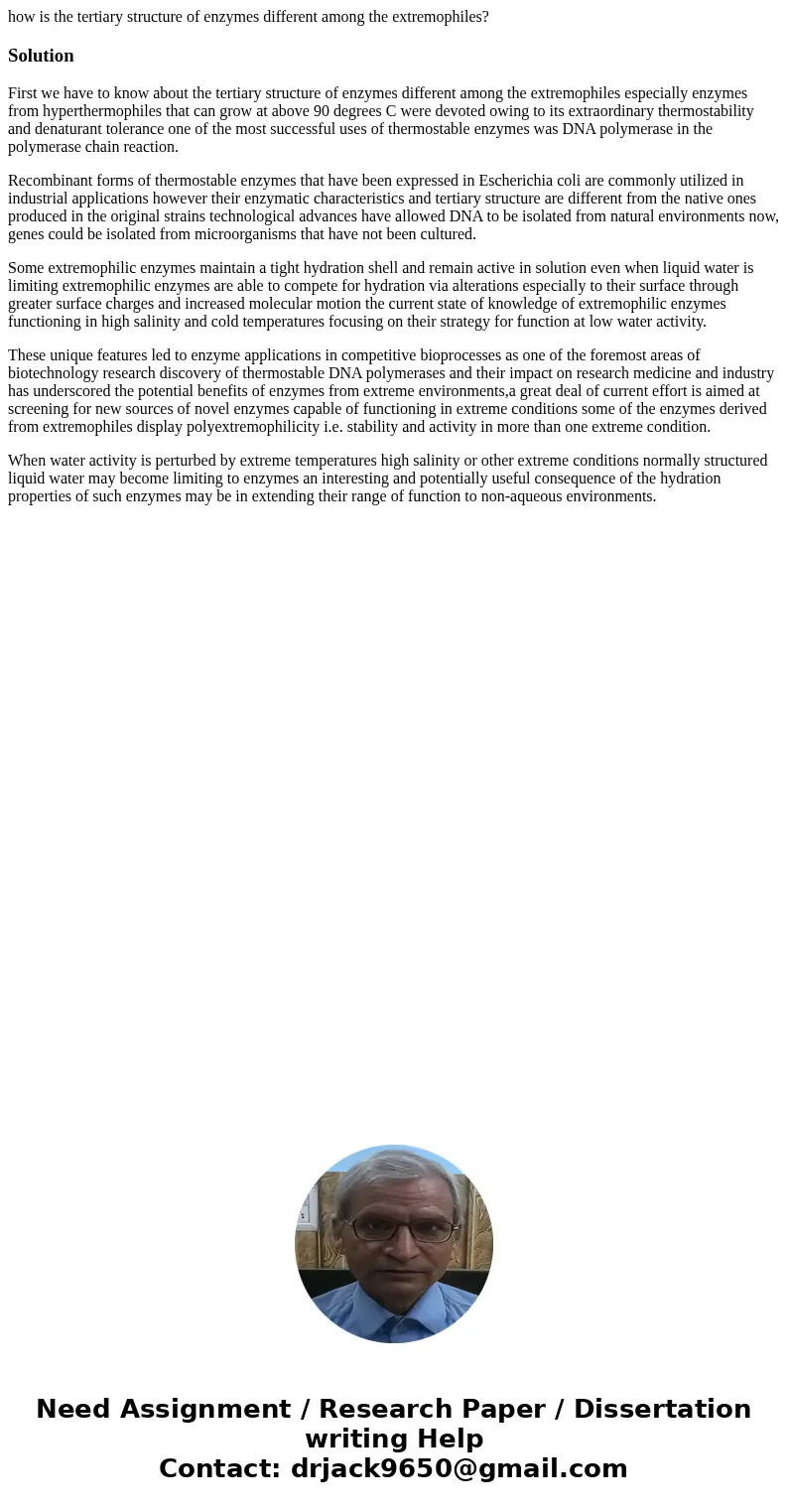how is the tertiary structure of enzymes different among the
how is the tertiary structure of enzymes different among the extremophiles?
Solution
First we have to know about the tertiary structure of enzymes different among the extremophiles especially enzymes from hyperthermophiles that can grow at above 90 degrees C were devoted owing to its extraordinary thermostability and denaturant tolerance one of the most successful uses of thermostable enzymes was DNA polymerase in the polymerase chain reaction.
Recombinant forms of thermostable enzymes that have been expressed in Escherichia coli are commonly utilized in industrial applications however their enzymatic characteristics and tertiary structure are different from the native ones produced in the original strains technological advances have allowed DNA to be isolated from natural environments now, genes could be isolated from microorganisms that have not been cultured.
Some extremophilic enzymes maintain a tight hydration shell and remain active in solution even when liquid water is limiting extremophilic enzymes are able to compete for hydration via alterations especially to their surface through greater surface charges and increased molecular motion the current state of knowledge of extremophilic enzymes functioning in high salinity and cold temperatures focusing on their strategy for function at low water activity.
These unique features led to enzyme applications in competitive bioprocesses as one of the foremost areas of biotechnology research discovery of thermostable DNA polymerases and their impact on research medicine and industry has underscored the potential benefits of enzymes from extreme environments,a great deal of current effort is aimed at screening for new sources of novel enzymes capable of functioning in extreme conditions some of the enzymes derived from extremophiles display polyextremophilicity i.e. stability and activity in more than one extreme condition.
When water activity is perturbed by extreme temperatures high salinity or other extreme conditions normally structured liquid water may become limiting to enzymes an interesting and potentially useful consequence of the hydration properties of such enzymes may be in extending their range of function to non-aqueous environments.

 Homework Sourse
Homework Sourse